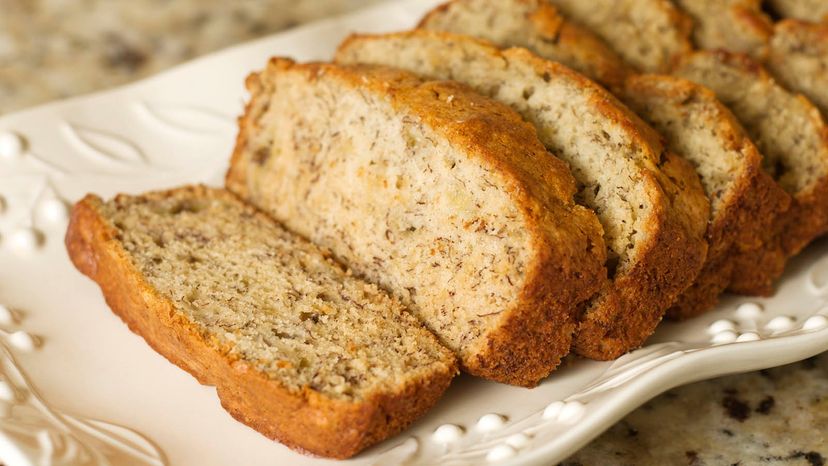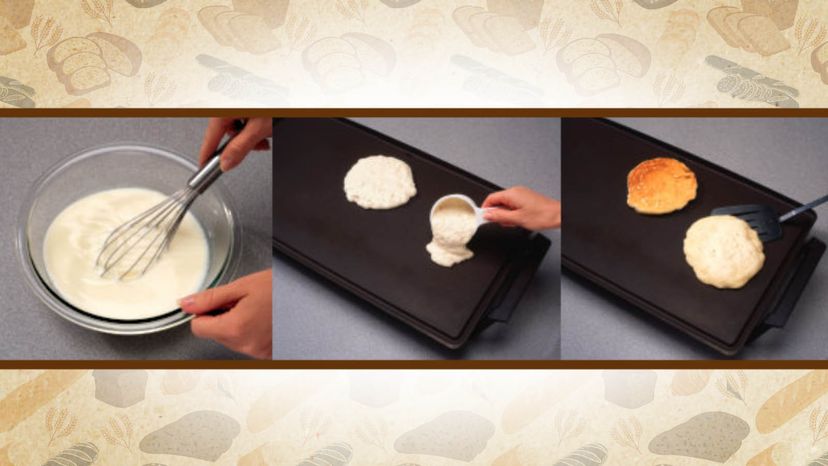Quick Dough Breads

Biscuits and scones are the most common quick dough breads. Solid fat, such as butter, margarine or shortening, is cut into dry ingredients to start the process. These breads may be kneaded very briefly to bring the dough together for shaping. Too much kneading will make the breads mealy and tough.
To make quick dough breads:
Advertisement
- Cut the solid fat into the dry ingredients until the mixture resembles coarse crumbs.
- Add the combined liquid ingredients and stir the mixture just until the dough clings together.
- Biscuits and scones are ready to eat when their top and bottom crusts are an even golden brown color. Follow specific cooling instructions in each recipe.
Quick Batter Breads
Muffins, coffee cakes, tea breads and pancakes are the most popular quick batter breads. Pancakes, also known as flapjacks, are one of the world's simplest and versatile forms of bread.
To make quick batter breads:
- Add the combined liquid ingredients to the combined dry ingredients and stir only until the mixture is evenly moistened.
- Pour onto prepared pans. The batter should look lumpy; too much stirring or beating will give the breads a tough texture with lots of holes and tunnels.
- If cooking pancakes, flip to cook on both sides.
- These quick breads are completely baked when a wooden toothpick inserted near the center comes out clean. Follow specific cooling instructions in each recipe.

Storing Quick Breads
Store quick breads in plastic bags at room temperature for up to three days. Freeze them tightly wrapped in freezer bags or heavy-duty foil for up to three months. Reheat frozen breads wrapped in foil in a 300-degrees Fahrenheit oven for 15 to 18 minutes.